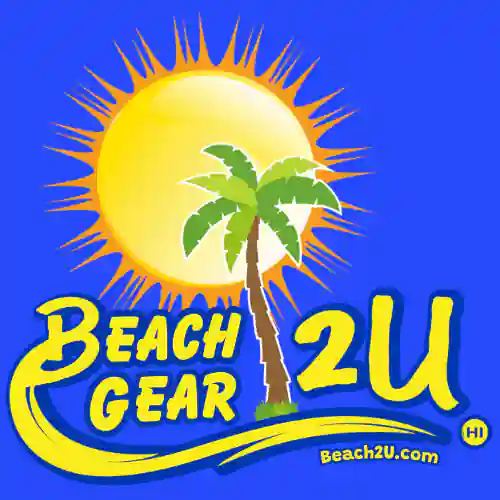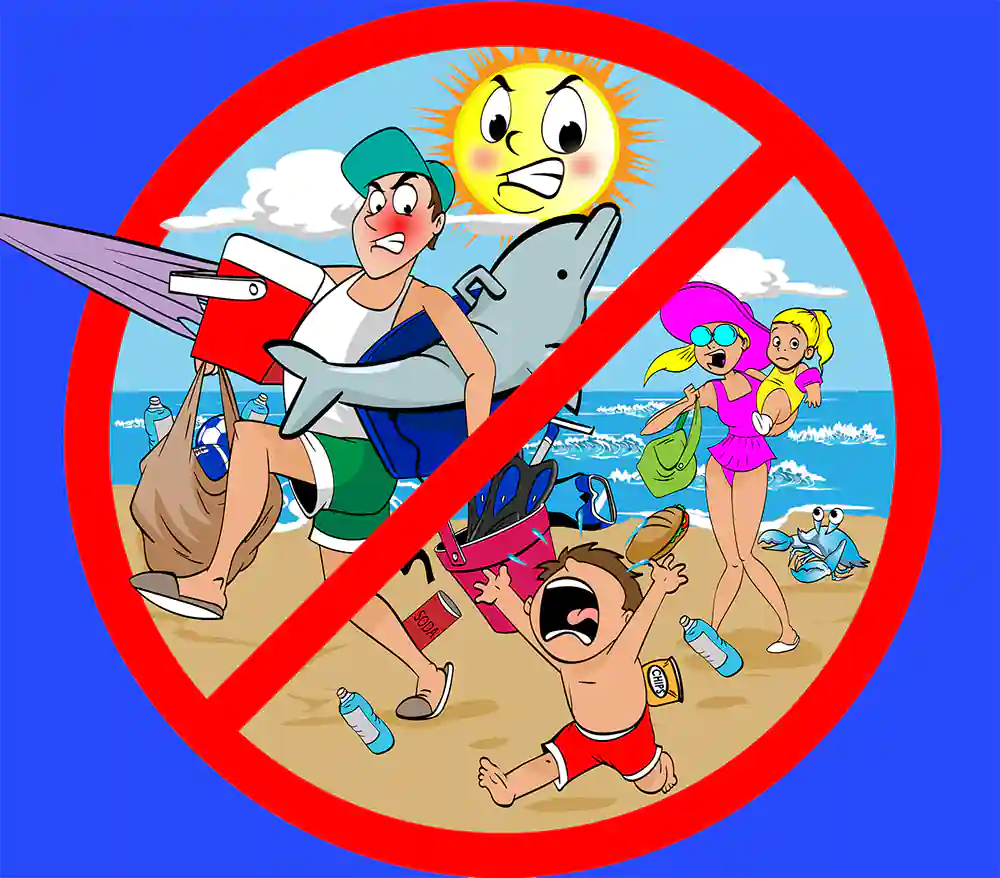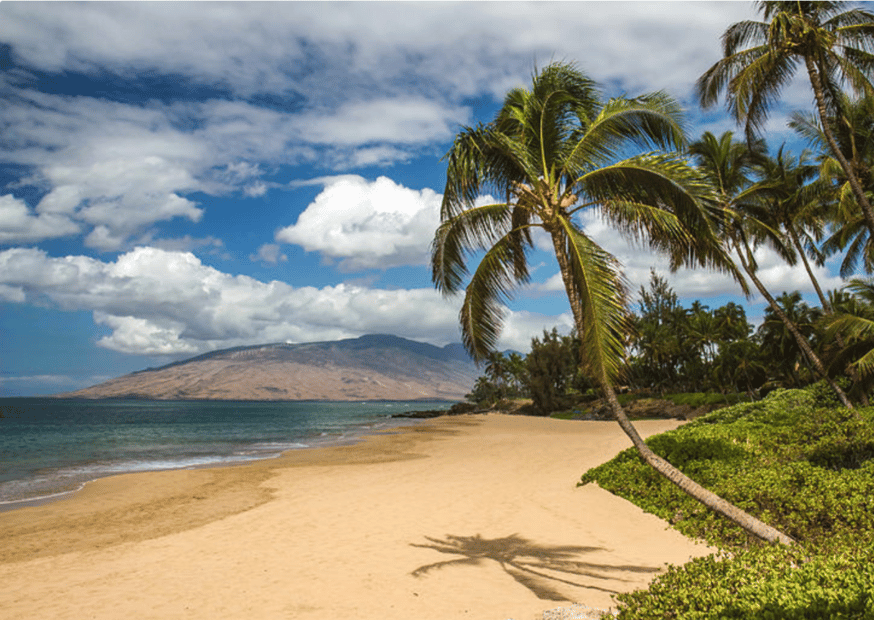
Ever had your beach umbrella take off like a kite? One second, it's shading you from the sun. Next, it’s tumbling down the shore, sending sand flying and putting others at risk. Every year, over 3,000 people end up in emergency rooms due to umbrella-related injuries, most caused by weak anchoring. Beach winds are unpredictable. A calm morning can turn into a breezy afternoon, and without a secure base, even the best beach umbrella won’t stay put. Many people spend half their day repositioning their umbrella, only to watch it tip over again.
The solution? A strong sand anchor. The right anchor transforms any umbrella into the best wind-resistant beach umbrella, keeping it steady even when the wind picks up.
Never Worry About Your Umbrella Blowing Away Again
Why Your Beach Umbrella Needs A Proper Anchor
The best beach umbrella becomes dangerous without proper anchoring. Standard umbrellas typically weigh only 2-3 pounds but create over 5 square feet of wind-catching surface. This sail-like effect means they can become unstable in winds as low as 10-15 mph speeds that feel like nothing more than a pleasant breeze to most people.
Understanding Beach Wind Dynamics
Wind dynamics at beaches are particularly tricky. As land heats faster than water during the day, warm air rises from the beach, creating a low-pressure area that pulls in cooler air from over the water. This phenomenon, known as a "sea breeze," typically strengthens throughout the afternoon precisely when many beach-goers are settled in for the day. What started as a calm morning can quickly develop into conditions strong enough to uproot improperly secured umbrellas.
Why Proper Anchoring Matters
Beyond safety, a beach umbrella with a secure sand anchor means you can relax without constantly monitoring and adjusting your shade. Beach-goers spend a lot of time repositioning their umbrella when using inadequate anchoring methods. That's nearly a third of your relaxation time wasted! The right windproof beach umbrella with a sturdy screw anchor gives you peace of mind throughout your beach day.
The Best Beach Umbrellas With Screw-Style Anchors
Spiral sand anchors or corkscrew-style anchors use a spiral design that digs deep into the sand, increasing resistance with every turn. This twisting motion compacts the surrounding sand, creating what engineers call "holding capacity." The more you turn, the stronger the grip, just like how a wood screw locks tightly into place with each rotation.
Best for: Medium to coarse sand, moderate wind conditions (up to 15-20 mph)
Pros of beach umbrellas with built-in screw anchors:
- Easy to install with a simple twisting motion, requiring no special tools
- Provide strong holding power in most sand conditions due to their large surface area
- Typically lightweight (1-2 pounds) and portable, easily fitting in beach bags
- Works well with standard umbrella poles (0.75-1.5 inches in diameter)
- Most affordable, effective option ($15-25) while still providing reliable performance
Recommendation: For creating the best beach umbrella windproof setup in typical conditions, a quality umbrella with a screw-style anchor is hard to beat for value and effectiveness. These umbrellas perform exceptionally well in the most common beach environments and offer the best combination of affordability, portability, and security for most users.
Book your beach umbrellas now!
Key Features to Look For
When shopping for a beach umbrella anchor, certain features separate high-performing products from disappointing ones. Focusing on these key attributes will help you select an anchor that provides reliable performance throughout multiple beach seasons.
Material Quality
The materials used in your anchor directly impact its durability and performance in harsh beach environments. Beach umbrellas with substandard materials tend to degrade quickly, showing noticeable wear after just 10 uses. In contrast, high-quality anchors maintain up to 98% of their functionality, ensuring long-term stability and reliability.
Look for these specific material characteristics:
- Marine-grade materials: Stainless steel (preferably 316 grade), reinforced nylon, or other corrosion-resistant materials that can withstand saltwater exposure
- UV-resistant components: Ensures your umbrella provides proper shade and protection from harmful rays
- Rust-proof metals: Avoid anchors with parts that will quickly corrode in the beach environment, particularly exposed screws, springs, or pivot points
- Impact-resistant plastics: Handles and grips should withstand being stepped on or dropped on hard surfaces without cracking or breaking
Compatibility
Not all anchors work with all umbrellas, making compatibility a critical consideration before purchase. Umbrella pole diameters vary significantly between manufacturers, with measurements ranging from 0.75 inches to over 2 inches for commercial models.
Before purchasing, check these specific compatibility factors:
- Pole diameter compatibility: Most anchors fit poles between 0.75-1.5 inches in diameter, but always verify your specific umbrella size with actual measurements
- Weight capacity: Ensure the anchor is rated to hold the size and weight of your particular umbrella (larger umbrellas with 7+ foot canopies require heavier-duty anchors)
- Height adjustability: Some anchors allow you to place your umbrella at different heights, which is useful for adjusting shade as the sun moves without reinstallation
Portability
Since you'll be carrying your anchor to and from the beach, likely alongside other gear, portability considerations directly impact your beach day experience. The average beach-goer already carries between 15-25 pounds of gear, making anchor weight and packability significant factors.
Consider these specific portability aspects:
- Weight: Lighter anchors (1-2 pounds) are easier to carry but may provide less stability in challenging conditions
- Carrying case: Some anchors include a storage bag for sand-free transport, preventing sand from getting into your car or other beach items
- Collapsible design: Features that allow the anchor to pack smaller for travel, such as folding handles or detachable components, make transportation significantly easier
Ease of Use
The perfect anchor should be simple to install and remove, even for users with minimal technical skills or physical strength. Beach time is precious, and no one wants to spend 15 minutes struggling with equipment setup.
Evaluate these usability factors:
- Installation method: Some require only twisting by hand, while others need tools or significant physical effort
- Time to set up: The best anchors can be installed in under 2 minutes from unpacking to being fully secured
- Removal mechanism: Look for features that make it easy to extract from packed sand, such as reverse threading or built-in handles
Umbrella Design Features
When selecting a windproof beach umbrella, look for these complementary features:
- Vented canopy design: Umbrellas with strategically placed wind vents allow air to flow through rather than push against the fabric. This reduces the total wind force by 25-40% compared to standard canopies.
- Fiberglass ribs: More flexible than traditional metal ribs, fiberglass components bend without breaking in strong gusts. They also return to their original shape after wind stress, extending the umbrella's usable lifespan.
- Reinforced joints: Quality umbrellas have extra reinforcement at critical stress points, particularly where ribs connect to the central pole and at the canopy attachment points.
- Tilt mechanisms: Precision-adjustable angles help you maintain optimal shade as the sun moves without repositioning your anchor. Look for umbrellas with multiple tilt positions rather than basic two-position systems.
Rent Your Umbrella Anchor at Beach 2U & Make Every Beach Day Fun!
Installation Tips for Maximum Stability
Even the best beach umbrella for wind resistance needs proper anchor installation to be effective. Sand density and moisture content dramatically impact how well an anchor holds. Dry surface sand provides almost no holding power, while slightly damp sand a few inches below the surface can grip an anchor with surprising strength.
Follow these professional installation techniques for maximum stability:
- Dig down to moist sand: Surface sand is loose and provides poor holding power. Dig down 6-10 inches until you reach firmer, slightly damp sand before installing your anchor. The color change from light to darker sand indicates you've reached the proper depth.
- Use your body weight: When twisting screw-style anchors, position yourself directly above the anchor and push down with your body weight while turning to drive the anchor deeper into the sand. This vertical pressure helps overcome resistance and achieves deeper penetration.
- Rock the pole slightly: After installation, gently rock the umbrella pole in a controlled circular pattern to help the anchor settle more firmly into the sand. This movement helps the sand conform to the exact shape of the anchor.
- Add water: Pour a cup of water over the sand surrounding your installed anchor. This helps sand particles bind together through surface tension, creating stronger resistance against wind. Allow 3-5 minutes for the water to fully penetrate and bind the sand.
- Check stability regularly: Throughout your beach day, occasionally check your anchor's stability, especially after swimming or if wind conditions change. Slight umbrella movement, pole leaning, or sand displacement around the anchor are early indicators that stability might be compromised.
Emergency Anchor Solutions
Forgot your umbrella with a built-in anchor or need additional stability on an unexpectedly windy day? Try these improvised solutions:
- Bury the pole: Dig a hole 12-18 inches deep, place your umbrella pole inside, and pack sand tightly around it. This traditional method works surprisingly well but requires significant digging effort.
- Use a cooler or heavy bag: Position your heavy cooler against the umbrella pole on the upwind side. This works best when combined with burying the pole for additional stability.
Note that these solutions are not as reliable as proper beach umbrellas with built-in screw anchors, but can help in a pinch when you find yourself without proper equipment.
Secure Your Shade and Enjoy Every Moment
A flying umbrella can ruin a perfect beach day in seconds, but the right anchor ensures your shade stays exactly where it should. No more chasing, no more adjusting, just pure relaxation.
Choosing the best beach umbrella with a strong beach umbrella sand anchor is not just about convenience. It is about safety, comfort, and making the most of every beach trip. Think about your usual beach conditions, wind levels, and how much effort you want to put into the setup. A small investment now saves you from endless frustration later. Lock in your shade, sit back, and enjoy the beach the way it was meant to be. Worry-free, breezy, and absolutely perfect.
No more struggling with flimsy umbrellas, sandy towels, or uncomfortable seating. Beach 2U brings you high-quality beach umbrellas with secure anchors designed for comfort, convenience, and total relaxation, the best beach accessories for a perfect day. Why settle for less when the perfect beach day is just one click away?
Get the best beach umbrellas here!
FAQs
How do I install a beach umbrella sand anchor?
Push the anchor into the sand and twist it down firmly until most of it is buried. Insert the umbrella pole, tighten any securing mechanisms, and check for stability by giving it a gentle tug.
Are sand anchors compatible with all umbrellas?
Most sand anchors fit standard beach umbrellas, but sizes can vary. Check the diameter of your umbrella pole and compare it to the anchor’s specifications before buying or renting.
Which material is best for a sand anchor?
Plastic anchors are lightweight and resistant to rust, while metal anchors offer extra durability but may corrode over time. A high-quality, reinforced plastic or rust-proof metal is ideal for long-term use.
How to secure the beach umbrella in the wind?
To secure a beach umbrella in the wind, start by digging the anchor deep into the sand, ideally 6-10 inches below the surface to reach firmer, wetter sand. Use your weight to twist the anchor deeper into the sand for maximum stability.









